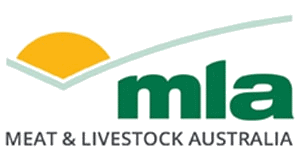Optimising Stubble Grazing Strategies in the Great Southern
| Project start date: | 01 April 2025 |
| Project end date: | 01 December 2028 |
| Project status: | In progress |
| Livestock species: | Sheep, Lamb |
| Relevant regions: | Western Australia, Sub-tropical sub-humid |
| Site location: | WA - Great Sothern Region: Jingalup, Muradup |
Summary
The end of the live export market is a major concern for producers in the Great Southern region of Western Australia, where Merino sheep farming is common. However, research suggests that focusing on Merino prime lamb production can boost profitability, especially with increased cropping allowing lambs to graze crop stubbles for high growth rates.
Instead of a "set and forget" approach, prioritizing lambs in a stubble grazing strategy is optimal. Lambs should move between paddocks to maintain growth rates above 140 g/hd/day, and lower priority mobs can graze stubble until weight changes fall to -40 g/hd/day. Despite most producers grazing crop stubbles in summer, fewer than 15% actively manage grazing. Research also indicates that producers may underestimate the grazing potential of their stubbles.
The MLA GRDC Partnership PDS aims to demonstrate the grazing potential of crop stubbles and how, through effective management strategies, they can be utilised to reduce reliance on live export and shift focus toward the more profitable prime lamb market.
Objectives
By May 2028, in the Great Southern region of Western Australia, the project will establish three demonstration sites each year, engaging 15 core producers and 75-150 observer producers to:
1. Using 12 sites, demonstrate the grazing potential of five different crop stubbles over multiple years.
2. Showcase an improved stubble grazing strategy over the summer period to:
a. Increase liveweight (g/ha/day) and condition scores and support the production of prime lambs.
b. Increase grazing days per hectare and thus carrying capacity (DSE/ha).
c. Reduce Supplementary feeding (kg/dse).
3. Develop practical, easy-to-follow guidelines to help producers implement effective stubble grazing strategies, such as grazing until there are fewer than 10 grains per 1/10th of a square meter. Guides distributed to all core and observer producers.
4. Highlight how optimal stubble utilisation can minimise the need for burning or crunching stubbles.
5. Conduct a detailed whole farm analysis to:
a. Showcase the economic value ($/ha) of adopting an active stubble management strategy.
b. Showcase, at a farm level, the increased meat turned off under the active grazing strategy (kg/ha)
c. Address outstanding questions from core producers (e.g. how the economic benefit varies for systems with 20% crop vs. 80% crop or with different sheep breeds such as Dorper, merino etc).
6. 90% of core producers and 50% of observers report an increased understanding of stubble grazing capacity and have implemented or plan to implement an active stubble grazing strategy.
7. For the observer and core producers, host an annual field day and other activities such as a webinar to present demonstration site results and encourage the adoption of key practices.
Get involved
<p style="font-size: 18px;">To find out more contact the PDS facilitator:</p>
<p style="font-size: 18px;">Sheridan Kowald</p>
<p style="font-size: 18px;"><a href="mailto:eo@southerndirt.com.au">eo@southerndirt.com.au</a></p>


